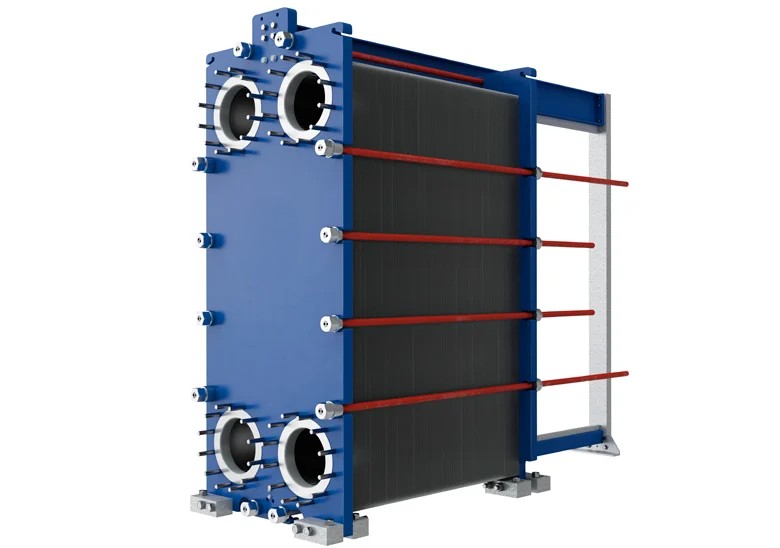Plate Heat Exchangers (PHEs) are one of the most efficient and widely used heat transfer solutions across industries due to their compact size, high efficiency, and versatility. These devices are designed to transfer heat between two fluids using thin, corrugated metal plates. The plates provide a large surface area for heat exchange, making the process more effective compared to traditional shell and tube heat exchangers. Plate heat exchangers are used in various applications such as HVAC, refrigeration, food processing, power generation, chemical industries, pharmaceuticals, and marine systems.
The fundamental working principle of a plate heat exchanger revolves around heat conduction and convection. The unit consists of a series of corrugated metal plates arranged in a stack, separated by gaskets or welded joints, depending on the type. The hot and cold fluids flow alternately through adjacent channels, allowing heat transfer from the hot fluid to the cold fluid without direct mixing. The corrugated design of the plates creates turbulence, which enhances heat transfer by breaking down boundary layers and reducing fouling.
Types of Plate Heat Exchangers
- Gasketed Plate Heat Exchangers
- These are the most common type of plate heat exchangers, where plates are held together by a frame, and gaskets are used to seal the channels between the plates.
- They allow for easy disassembly, making maintenance, cleaning, and plate replacement simple.
- Commonly used in HVAC systems, food processing, chemical plants, and district heating applications.
- Brazed Plate Heat Exchangers
- Unlike gasketed models, brazed plate heat exchangers are permanently fused together using copper or nickel brazing, eliminating the need for gaskets.
- They are compact, durable, and leak-proof, making them ideal for high-pressure and high-temperature applications.
- Frequently used in refrigeration, hydraulic oil cooling, and residential heating systems.
- Welded Plate Heat Exchangers
- This type features fully welded plates, making them highly resistant to leakage and capable of handling extreme pressures and temperatures.
- They are ideal for corrosive fluids and hazardous chemicals, commonly used in oil refineries, petrochemical plants, and heavy industrial applications.
- Semi-Welded Plate Heat Exchangers
- These combine welded and gasketed plates, allowing one fluid to flow in a sealed, leak-proof path, while the other fluid flows through gasketed channels.
- They are specifically used in applications that require handling volatile gases, ammonia refrigeration, and chemical processing.
- Double-Wall Plate Heat Exchangers
- Designed for applications where fluid cross-contamination must be prevented, they feature two separate layers of plates with a small air gap between them.
- Any leakage is easily detected through the gap, ensuring high safety standards.
- Common in food processing, pharmaceuticals, and potable water systems.
Plate heat exchangers have revolutionized modern heat transfer systems due to their compact size, high efficiency, and easy adaptability. Their ability to handle diverse fluids, extreme temperatures, and high pressures makes them a key component in industrial operations. With their scalability and cost-effectiveness, they contribute significantly to energy conservation, process optimization, and improved thermal management. As industries continue to focus on sustainability and energy efficiency, plate heat exchangers will remain an essential technology for reducing carbon footprints and enhancing operational productivity.
